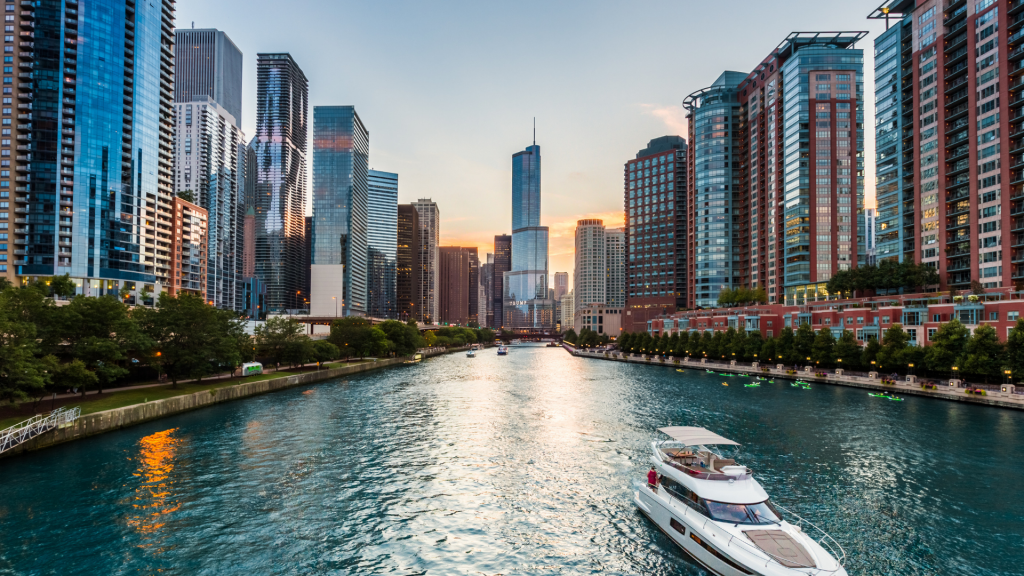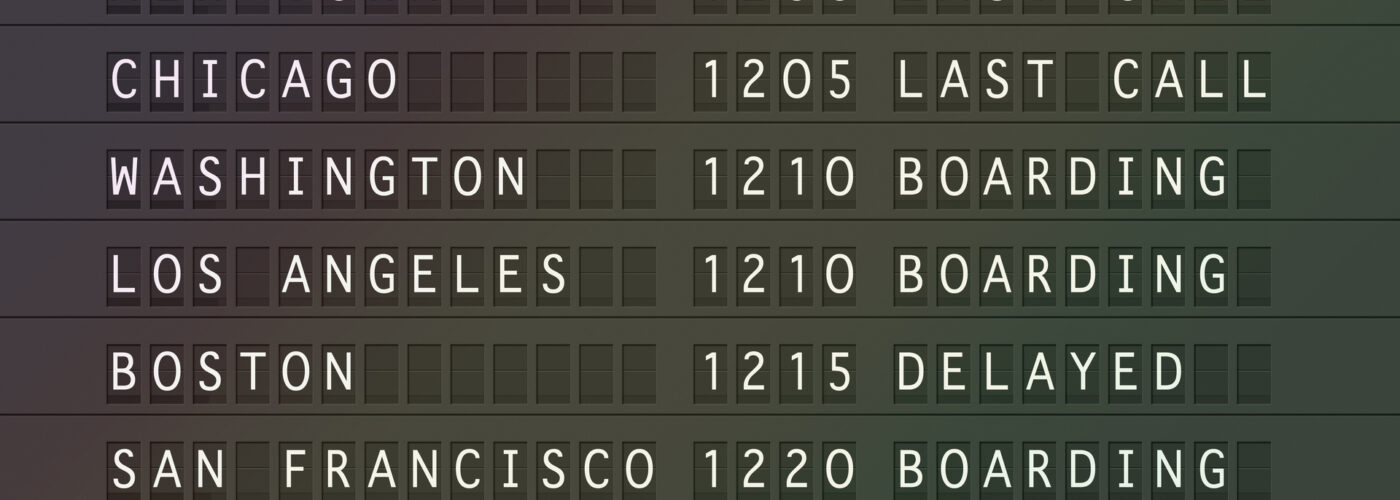East Coasters know that the oft-traveled Boston to New York to Washington, D.C. route can be a pricey one whether you take a car, plane, train or bus. Travelers who opt to drive between the cities in an effort to save money may now be rethinking that option considering fluctuating gas prices and the maddening traffic jams that are common along the way. In addition, heated competition among JetBlue, Delta, and American Airlines has made flying a much more affordable option. Here we outline four ways to travel to the cities, including the cost, travel time, and pros and cons of each.
Traveling the Boston to New York City to Washington, D.C. Route by Air
Who: Delta Airlines (via La Guardia, JFK, Newark, BWI, Ronald Reagan, and Dulles), American Airlines (via JFK, LaGuardia, and Reagan), and JetBlue (via LaGuardia, Newark, BWI, and Reagan) offer nonstop service between the three cities. United operates the Boston to Newark route and to Dulles and Reagan in D.C. Note that JetBlue does not offer flights from the New York City area to D.C.
Cities Served: Boston, New York, and Washington, D.C.
Cost: Prices and fares vary dramatically based on availability and on the date and time of your flight. However, round-trip fares to and from all three cities tend to stay at or below $150. You should also take into consideration transportation to/from the city center and each airport when comparing prices for Boston to New York City to Washington, D.C. via air to other modes of transportation, which typically operate closer to urban centers and points of interest.
Travel Time: Depending on your route, a nonstop flight can last anywhere from 45 minutes to two hours, not including travel time to and from the airport or check-in.
Pros:
- Many departures. All of these airlines have departures all day long, but you may pay more for prime time. Less expensive fares can sometimes be found early in the morning or late in the evening.
- You’ll earn frequent flyer miles.
- No traffic (except getting to and from the airport).
Cons:
- American, Delta, and JetBlue operate from New York’s LaGuardia Airport, which is the least convenient of the city’s three airports if you are planning to go to Manhattan via public transportation. However, it’s the closest airport, and the least expensive to travel to and from if you plan to take a taxi or car service.
- Finding the best fare can be time-consuming with so many possible airport combinations, particularly if you’re flying between New York and D.C. as each city is served by three major airports.
Traveling the Boston to New York City to Washington, D.C. Route by Train
Who: Amtrak offers both Acela Express and regional service between the three cities, plus Philadelphia.
Cities Served: There are daily weekday Acela Express round-trips between Washington, D.C. and New York, as well as several daily weekday round-trips between Boston, New York, and Washington, D.C. Weekend service runs approximately once every hour between New York and Washington, D.C. about as regularly to/from Boston.
Cost: In comparison to airfare, train service between Boston, New York City, and Washington, D.C. is oftentimes just as expensive, if not more. Amtrak operates both a regional service and “express” service, or the Acela, and charges more for the faster service.
The lowest one-way fares from Boston to New York City on the regional service typically start around $56, while the Acela starts around and $97. The lowest one-way fares from New York City to Boston on the regional service typically start around $54, as compared to about $137 for the Acela service. Prices fluctuate during busier travel times and time of day. The lowest one-way fares from Boston to Washington, D.C. on the regional service typically start around $81 for regional and $144 for Acela. Prices fluctuate during busier travel times and time of day. Unlike with airlines, prices tend to only go up the closer you get to the travel date as select train times sell out. Follow Amtrak on social media as it typically offers fare sales around holidays and during other times of year. Check out its deals page here.
Travel Time: For Acela Express service, plan on about three hours between Washington, D.C. and New York, about seven hours between Washington, D.C. and Boston, and about three and a half hours between New York and Boston. For regional trains, add 30 to 60 minutes, depending on your route. Click here for the Acela Express and Northeast Regional timetables.
Pros:
- On Acela Express, “Quiet Cars” make for a comfortable and peaceful ride, and conference tables and power outlets allow passengers who wish to work to do so easily. An onboard bistro offers several food and beverage options.
- The train stations in each city are easily accessible from other points in the city.
- For travelers concerned with the environmental impact of their travel, trains are the most eco-friendly option.
- There is free Wi-Fi on the train routes.
- Larger and more comfortable seats than an airplane.
Cons:
- Regional trains are much less luxurious than the Acela Express, and they stop more frequently.
- With the abundance of flight options, taking the train may prove both more expensive and more time-consuming than flying.
Traveling the Boston to New York City to Washington, D.C. Route by Bus
Who: Greyhound, “Chinatown” bus services, and several newer bus services. The “Chinatown” buses are called this because they are most often operated by Chinese tour companies and have a pick-up or drop-off point in the city’s Chinatown area. There is also BoltBus, which runs between New York and Boston, and New York and Washington, D.C. (and also stops in Philadelphia). Megabus, which also operates between major U.S. cities; Peter Pan, which operates between major U.S. cities; and Lucky Star, which operates between New York City and Boston.
Cities Served: Boston, New York, Washington, D.C., and Philadelphia.
Cost: Bus fares vary, starting at a measly $1 each way up to about $45. The majority of the “Chinatown” buses cost $15 each way for travel between Boston and New York and about $20 each way for travel between New York and Washington, D.C.
Travel Time: About four hours between Boston and New York in light traffic and about five hours between New York and Washington, D.C. However, all three cities have notoriously heavy traffic patterns, and you’re lucky if your trip is this short.
Pros:
- The price of the bus is less than you would pay in gas and tolls, and you won’t have to deal with parking once you get to your destination city.
- The “Chinatown” buses require no advance purchase, though many are sold out during rush-hour travel times.
- There are several companies to choose from in each destination city.
- With so many options, you’re unlikely to get shut out, even on busy travel days.
Cons:
- Travelers are at the mercy of traffic and there may be limited onboard entertainment (although some lines now have added electrical outlets and Wi-Fi to newer buses).
- The “Chinatown” buses can be less reliable than other options, as breakdowns do occur.
To search fares on multiple bus companies at once, try Busbud.com.
Traveling the Boston to New York City to Washington, D.C. Route by Driving
Who: You, traveling in your car. (Under certain circumstances you may want to consider renting a car instead, like if your own vehicle gets poor gas mileage, for example, or if you are leasing your car and don’t want to put too many miles on it.)
Cities Served: Boston, New York, Washington, D.C. and any destination in between.
Cost: Depends on your route and the gas mileage of your vehicle. Assuming you get 25 miles per gallon and gas costs $2.50 per gallon (according to the national average), you’ll pay about $53 to drive one way from D.C. to Boston. Don’t forget to add in tolls, parking expenses, and rental fees (if applicable). You’ll also want to keep in mind the less tangible wear and tear on your vehicle.
Travel Time: About four hours in light traffic between Washington, D.C. and New York or between New York and Boston.
Pros:
- You can make your own travel schedule, departing whenever it’s convenient for you and stopping as necessary for food and bathroom breaks.
- The more people traveling in your group, the more cost-effective an option this is.
- If you need a car in your destination city, driving yourself is almost always cheaper than renting a vehicle once you get there.
Cons:
- You’ll be at the mercy of traffic along your route, particularly if your trip coincides with rush hour in any of these cities.
- Parking downtown in any of these three cities can be inconvenient and expensive.
More from SmarterTravel:
- Top 11 Places to Visit in New York City
- 10 Fun Things to Do in Boston
- 23 Must-See Washington, D.C. Attractions
Editor’s note: This article has been updated since the date of its publication with the input of NYC & Company. Originally written by Genevieve S. Brown; updated by Sarah Schlichter and Ashley Rossi.
We hand-pick everything we recommend and select items through testing and reviews. Some products are sent to us free of charge with no incentive to offer a favorable review. We offer our unbiased opinions and do not accept compensation to review products. All items are in stock and prices are accurate at the time of publication. If you buy something through our links, we may earn a commission.
Related
Top Fares From
Today's Top Travel Deals
Brought to you by ShermansTravel
Shop and Save with Country Inns...
Patricia Magaña
 Hotel & Lodging Deals
Hotel & Lodging Deals
$229 -- Chicago: Discounted Rates and...
Francesca Miele
 Hotel & Lodging Deals
$229+
Hotel & Lodging Deals
$229+
$188 -- Honolulu: Save on Oceanview...
Abigail Lamay
 Hotel & Lodging Deals
$188+
Hotel & Lodging Deals
$188+




